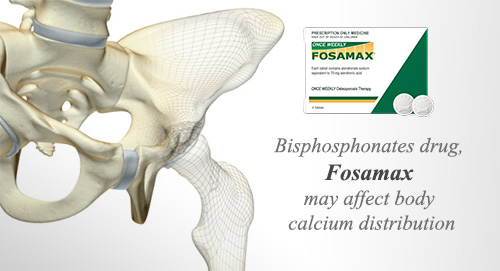As the legal battle continues between plaintiffs and defendants over the severe side effects related to Merck’s Fosamax medication, analysts and media sources document the ongoing updates of the cases involved as the controversy develops, industry experts say. Complaints over Fosamax’ complications against the pharmaceutical giant have accumulated over the past decade and in the last few years since 2009 lawsuits have continued to be brought to court by plaintiffs seeking compensation for damages sustained from taking the osteoporosis drug.
In early 2000 the FDA began receiving reports of complications relating to Fosamax therapy which were confirmed in later research findings that documented these side effects experienced by patients. The main complaints in these cases are osteonecrosis of the jaw and atypical femur fractures, which have lead to numerous lawsuits and recently esophageal cancer is speculated as another possible complication that might also lead to more court cases against Merck.
In six bellwether cases involving Merck and their popular osteoporosis medication Fosamax, plaintiffs have alleged that the pharmaceutical company is responsible for causing osteonecrosis of the jaw from taking the bone strengthening drug. All in all there are reportedly 2,345 pending cases filed by over 2.800 plaintiff groups against the drug company. Judicial authorities have been prompted by the overwhelming number of cases against Merck to combine and group a majority of cases in multi-district litigation proceedings to better and more efficiently hear cases altogether rather than individually.
Regarding these complaints, Merck’s official stance is that there is no proof defining a clear link with Fosamax to these rare and serious complications despite the FDA already ordering the drug manufacturer to update Fosamax’ warning labels including two of the most controversial conditions osteonecrosis of the jaw and atypical femur fractures. In conjunction with their official stance, Merck has motioned to have as much as 24 pending cases dismissed as having no merit, which was summarily rejected by the presiding judge.
As of now, more cases continue to be brought forward with the most recent news report on a New Jersey judge’s decision that opted to try a case involving atypical femur fracture instead of another case of osteonecrosis of the jaw. Experts foresee more lawsuits over Fosamax complications continuing to come forward with no telling when Merck will finally be able to address patients concerns for good.
URL References:- bloomberg.com/apps/news?pid=newsarchive&sid=aNS2rN6DCYOo
- 14news.com/story/19131939/south-carolina-woman-alleges-mercks-fosamax-is-responsible-for-femur-fracture-injury-files-lawsuit-alleging-the-bone-loss-drug-caused-the-atypical
- merck.com/newsroom/news-release-archive/corporate/2012_0227.html
- merck.com/newsroom/news-release-archive/corporate/2011_0907.html

 RSS Feed
RSS Feed